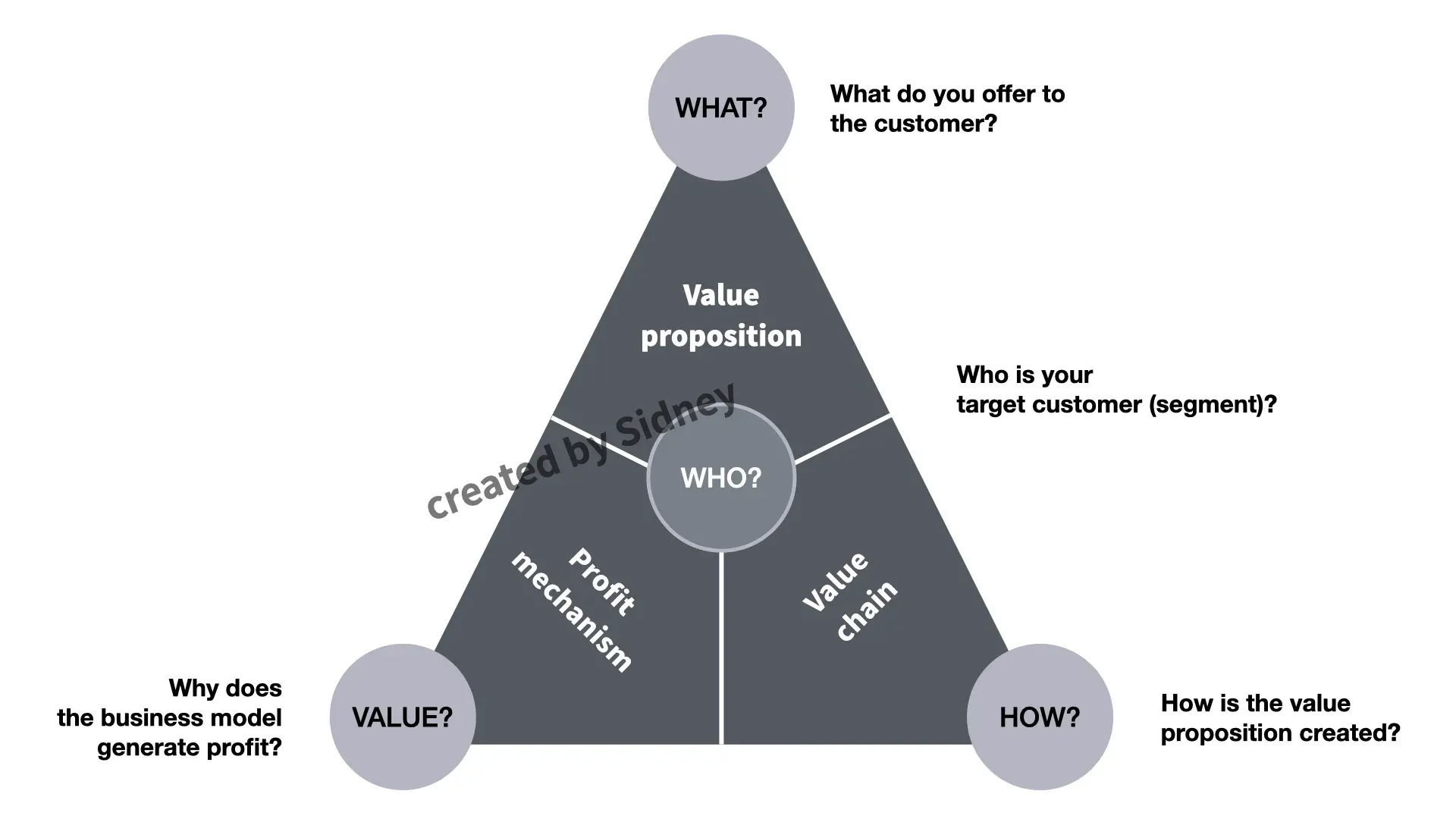Today, I start a series posts introducing about business model. At this very beginning, I will focus on business model innovation. The main content comes from a good book, Business Models Innovation, Digital Transformation, and Analytics, which I highly recommend it as an introductory book.
Table of contents
Open Table of contents
A very brief summary
A company’s current business model becomes tangible by describing it in four dimensions – the customer (Who?), the value proposition (What?), the value chain (How?) and the profit mechanism (Why?).
Four keys
- The customer – who are our target customers? It is important that you understand precisely which customer segments are relevant for you and which ones you will and won’t address with your business model. Customers are at the very heart of every business model – always! There are no exceptions.
- The value proposition – what do we offer to customers? This second dimension defines your company’s offerings (products and services) and describes how you cater for your target customers’ needs.
- The value chain – how do we produce our offerings? In order to put your value proposition into effect you need to carry through various processes and activities. These processes and activities in conjunction with related resources and capabilities and their coordination along the company’s value chain make up the third dimension of business model design.
- The profit mechanism – why does it generate profit? This fourth dimension, which includes aspects such as cost structures and revenue-generating mechanisms, clarifies what it is that makes a business model financially viable. It provides an answer to the central question that every company needs to ask: how do we produce value for our shareholders and stakeholders? Or simpler: why does the business model work commercially?”

External & Internal
In sum, a business model defines who your customers are, what you are selling, how you produce your offering, and why your business is profitable. Who-what-how-why describes a business model of which the first two (who and what) address its external aspects and the second two (how and why) address its internal dimensions.
Special reminder
Change management is a key success factor in any business model innovation project – identifying barriers and enablers is crucial for implementing a business model innovation in your company.